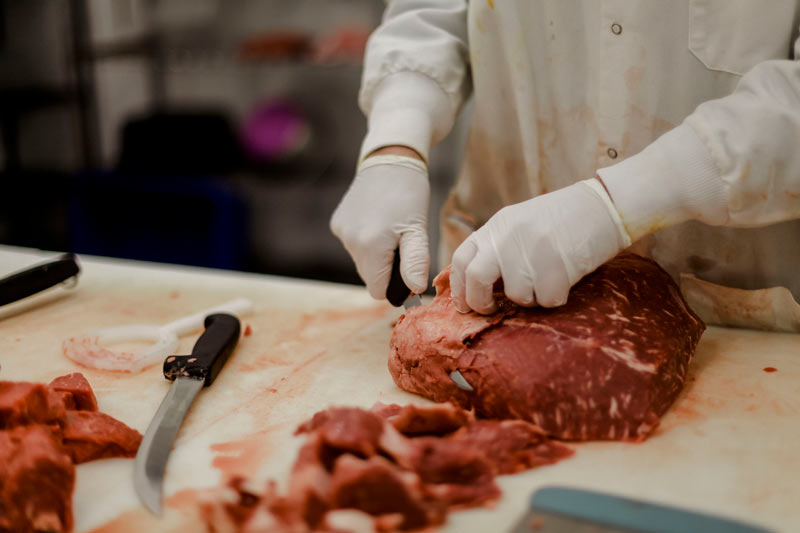Shop for quality meats at Bagley Meat Market Edwardsville IL for the best choices.
Shop for quality meats at Bagley Meat Market Edwardsville IL for the best choices.
Blog Article
How to Pick the Perfect Cut of Meat From a Trusted Meat Market
Picking the optimal cut of meat from a relied on meat market calls for a thoughtful method that stabilizes quality, cooking function, and spending plan. Understanding the different kinds of meat and their corresponding cuts is crucial, as is engaging with your butcher to obtain understandings right into sourcing and prep work.
Understanding Meat Cuts


As an example, the tenderloin is valued for its buttery texture and minimal connective tissue, making it excellent for quick cooking methods such as cooking or pan-searing. In comparison, harder cuts like the brisket or shank benefit from slow-moving food preparation techniques to break down collagen, generating rich and tasty results.
Additionally, the fat web content of a cut plays a crucial duty in taste profile and dampness retention during food preparation. Cuts with higher fat web content, such as ribeye, use a more durable taste, while leaner alternatives, like sirloin, might need mindful preparation to stay clear of dry skin (bagley meat market edwardsville il). Understanding these nuances permits educated options that boost culinary developments, guaranteeing that each meal showcases the very best qualities of the chosen meat
Variables to Take Into Consideration
When selecting the ideal cut of meat, numerous crucial variables enter into play that can substantially impact the final meal. Primarily, take into consideration the type of meat you prefer-- beef, pork, lamb, or poultry-- as each deals distinct flavors and structures. The details cut within that category is equally essential; for example, ribeye provides rich marbling, while tenderloin supplies a lean, buttery structure.
One more aspect is the food preparation approach you intend to make use of. Cuts ideal for grilling, such as T-bones or sirloins, vary from those better fit for slow cooking, like chuck roasts or shanks. Additionally, freshness is critical; always choose meat with a vivid shade and company appearance, signifying top quality and correct handling.
Costs cuts may offer exceptional preference, however there are also cost-efficient alternatives that, when prepared correctly, can produce tasty results. Balancing these factors will help you pick the perfect cut for your culinary demands.
Inquiries to Ask Your Butcher
A butcher's experience can be indispensable when picking the optimal cut of meat for your cooking endeavors. Begin by asking about the source of the meat.
Next, inquire about the various cuts readily available for the sort of meat you choose. A knowledgeable butcher will clarify the nuances of each cut, aiding you choose one that matches your cooking technique and wanted end result. Don't be reluctant to ask concerning the very best cooking methods for a details cut; butchers typically have pointers that can boost your dish.
It's likewise prudent to ask regarding the meat's quality. Inquire regarding the shipment timetable and how often the meat is replenished. This will certainly provide you confidence in the top quality of what you are buying. Finally, request recommendations based upon your personal taste choices. A good butcher will be eager to share their expertise and recommend original site cuts that will certainly delight your taste buds. Involving your butcher with these concerns can significantly improve your meat selection experience.
Acknowledging Quality Meat

Structure is another essential element; high quality meat need to feel strong and a little bouncy to the touch. Stay clear of any cuts that feel slimed or excessively completely dry, as these can indicate perishing or improper storage. Additionally, smell plays an important function; fresh meat needs to have a tidy, neutral aroma, while any off-putting or sour odors are warnings.
Lastly, take into consideration the resource. Purchasing from a reputable meat market, where the meat's beginning is known, can guarantee better standards. By focusing on these indicators-- color, marbling, texture, smell, and resource-- you can confidently select cuts that will certainly raise your cooking and eating experience.
Food Preparation Approaches for every Cut
Picking the appropriate food preparation method is critical for optimizing the taste and inflammation of each cut of meat. Different cuts possess distinct qualities that determine the most ideal food preparation techniques.
For tender cuts, such as filet mignon or ribeye, Bonuses completely dry heat methods like barbecuing, broiling, or pan-searing are suitable. Alternatively, tougher cuts, such as chuck or brisket, advantage from damp warmth approaches, including braising or slow-moving food preparation.
Pork chops and hen breasts are flexible and can be cooked utilizing both completely dry and damp techniques. While grilling or roasting can produce scrumptious results, poaching or sautéing can preserve moisture and inflammation. For lamb, methods like toasting or braising are suggested, as they enhance the meat's durable taste.

Conclusion
In conclusion, picking the optimal cut of meat from a trustworthy meat market necessitates an extensive understanding of meat cuts and consideration of numerous aspects, including source, high quality, and cooking methods. Involving with the butcher via targeted inquiries can generate beneficial insights and recommendations tailored to certain cooking demands. Focusing on both high quality and spending plan will certainly enhance the total gastronomic experience, making sure that the selected cut satisfies expectations in both flavor and preparation.
Report this page